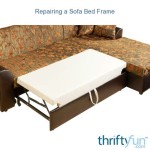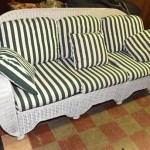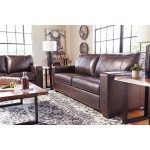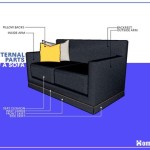Wooden Sofa Legs Replacement: A Comprehensive Guide
Maintaining the structural integrity and aesthetic appeal of furniture is crucial for longevity and overall home décor. Sofa legs, often subjected to considerable stress and wear, may require replacement over time. This article provides a detailed exploration of wooden sofa legs replacement, encompassing the reasons for replacement, the selection process, tools and materials required, the step-by-step procedure, and essential considerations for a successful outcome.
Sofa legs play a critical role in supporting the sofa frame and distributing weight evenly. Damage to these legs can compromise the stability and safety of the sofa. Furthermore, replacing sofa legs can offer an affordable and impactful way to upgrade the appearance of an existing sofa, aligning it with evolving design preferences or addressing issues like uneven flooring.
Reasons for Sofa Leg Replacement
Several factors may necessitate the replacement of wooden sofa legs. Understanding these reasons is crucial for identifying the need for replacement and ensuring the timely execution of the process.
Damage and Wear: Physical damage is a primary reason for replacement. This can include cracks, splits, chips, or breaks in the wood, often caused by excessive weight, accidental impacts, or simply the natural degradation of the material over time. Constant use subjects the legs to stress, which can lead to weakening and eventual failure. Visible signs of wear, such as significant scratches and gouges, may also motivate replacement for aesthetic reasons.
Instability: Unevenness or wobbling indicates a problem with the integrity of the legs, potentially stemming from loose connections or compromised structural integrity. If the legs cannot adequately support the sofa, replacement is advisable to prevent further damage and ensure user safety. Ignoring instability can lead to more significant damage to the sofa frame and even injuries to users.
Aesthetic Upgrade: Even if the existing legs are structurally sound, a change in décor or style preferences may warrant replacement. Replacing the legs with a different style, material, or finish can dramatically alter the overall look of the sofa and the room it occupies. This allows for a relatively inexpensive and simple way to update furniture to align with current design trends or personal tastes.
Height Adjustment: The height of a sofa can significantly impact comfort and ergonomics. If the existing legs result in an uncomfortable seating position or make it difficult to get up from the sofa, replacing them with taller or shorter legs can create a more comfortable and functional piece of furniture. This can be particularly beneficial for individuals with mobility issues.
Material Degradation: Wood, while durable, is susceptible to environmental factors like moisture and pests. Over time, wooden sofa legs can rot, warp, or become infested with insects, compromising their structural integrity and necessitating replacement. Regular inspection and maintenance can help prevent this, but once significant degradation occurs, replacement is the most effective solution.
Selecting Replacement Sofa Legs
Choosing the right replacement sofa legs involves careful consideration of several factors to ensure compatibility, stability, and aesthetic appeal. Rushing the selection process can lead to unsatisfactory results and potential installation issues.
Material: The type of wood used for the replacement legs is a critical factor. Hardwoods like oak, maple, and walnut are known for their durability and strength, making them suitable for supporting heavy sofas. Softwoods like pine are more affordable but may not be as robust. The chosen wood should also complement the existing sofa frame and overall décor.
Style: The style of the replacement legs should harmonize with the design of the sofa and the room. Options range from classic tapered legs and mid-century modern splayed legs to contemporary block legs and ornate carved legs. Consider the existing furniture styles and architectural features of the room to make an informed decision. Online resources and furniture showrooms can provide inspiration and visual examples.
Size and Height: Accurate measurements are essential for ensuring proper fit and function. Measure the existing legs carefully to determine the correct diameter and height. Consider the desired height of the sofa and choose replacement legs that achieve this. Ensure the legs are appropriately sized to support the weight of the sofa and its occupants. Using legs that are too short or too thin can compromise stability and safety.
Attachment Method: Sofa legs are typically attached using various methods, including threaded bolts, mounting plates, or dowels. Determine the existing attachment method and choose replacement legs that are compatible. If the existing attachment points are damaged, consider using mounting plates that can be screwed directly into the sofa frame. Ensure the chosen attachment method is secure and provides a stable connection between the legs and the sofa frame.
Finish: The finish of the replacement legs should complement the existing sofa and overall décor. Options include natural wood finishes, stains, paints, and varnishes. Consider the durability and ease of maintenance of the chosen finish. A protective coating can help prevent scratches, stains, and moisture damage. Matching the finish of the replacement legs to other wooden furniture in the room can create a cohesive and aesthetically pleasing look.
Step-by-Step Replacement Procedure
Replacing wooden sofa legs is a straightforward process that can be completed with basic tools and a bit of patience. Following these steps carefully will ensure a successful and secure replacement.
Preparation: Gather all necessary tools and materials, including the replacement sofa legs, a screwdriver (or drill with appropriate bit), a wrench (if needed), measuring tape, a level, and safety glasses. Protect the work area with a drop cloth or old blanket to prevent scratches and damage to the floor. Ensure adequate lighting for clear visibility during the process.
Removing the Old Legs: Carefully turn the sofa upside down, ensuring it is stable and supported. Locate the attachment points of the existing legs. Depending on the attachment method, use a screwdriver, wrench, or other appropriate tool to loosen and remove the legs. If the legs are stuck, gently tap them with a rubber mallet to loosen them. Inspect the attachment points on the sofa frame for any damage or debris. Clean the attachment points thoroughly before installing the new legs.
Installing the New Legs: Align the replacement legs with the corresponding attachment points on the sofa frame. If using threaded bolts, screw the legs into the frame until they are firmly tightened. If using mounting plates, position the plates correctly and secure them with screws. Ensure the screws are the appropriate length and do not penetrate through the sofa frame. If using dowels, apply wood glue to the dowel holes and insert the legs. Allow the glue to dry completely before moving the sofa.
Ensuring Stability and Levelness: Once the legs are installed, carefully turn the sofa upright. Use a level to check the stability of the sofa on a flat surface. If the sofa is not level, adjust the legs accordingly. This may involve shimming one or more legs to achieve a level and stable position. Test the sofa by sitting on it and applying pressure to different areas. Ensure the legs are securely attached and can support the weight without wobbling or creaking.
Finishing Touches: Inspect the newly installed legs for any imperfections or blemishes. Touch up any scratches or scuffs with appropriate paint or stain. Clean the sofa and surrounding area to remove any dust or debris. Arrange the sofa in its desired location. Step back and admire the updated look of the sofa with its new legs. Ensure the sofa is positioned correctly and does not obstruct any pathways or doorways.
By thoughtfully selecting replacement legs and following these detailed instructions, users can effectively address damaged or outdated sofa legs, enhancing both the functionality and aesthetic appeal of their furniture.

Willstar 4pcs Height Sofa Legs Wooden Furniture Replacement Armchair Cabinet Feet Wood Cabinets Straight Color For Couch Ottoman Dresser Natural 6cm Com

Odomy Square Solid Replacement Furniture Feet Legs Wood Sofa Couch Chair Ottoman Loveseat Coffee Table Cabinet Set Of 4 Com

Solid Wood Furniture Bun Feet Replacement Turned Legs 155mm

Wooden Sofa Legs Replacement Height Furniture Solid Wood Table Square Feet With S Mounting Plate Pads For Couch Chair Bed Cabinet Temu Oman

8 Pieces Furniture Couch Legs 6 Inch Round Solid Wood Sofa Natural Wooden Replacement China Soga Leg Gold Made In Com

Replacement Wooden Sofa Legs Tapered Wood Furniture Hardware China Made In Com

Set Of 4 Solid Wood Furniture Leg Replacement Sofa Legs With Non Slip Mat Mounting Plate And S For Bed Wardrobe Drawer 8cm Straight Fruugo No

Unique Bargains Wood Furniture Legs Replacement Feet For Diy 4pcs Com

4x Wooden Sofa Legs Replacement Tapered Feet For Stool Bed Chair Turned Wood

Wooden Furniture Legs Sofa Package 4 On Round Sofas Coffee Table Replacement Parts For Dressing Tables Cabinets And Circular Chairs Lying Rising
Related Posts








